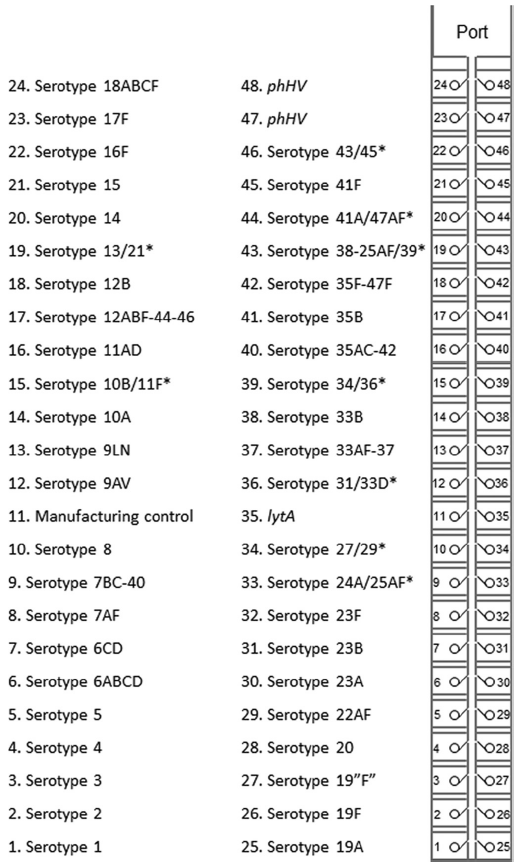Additional Research
In addition to enteric pathogens, tuberculosis, and acute febrile illnesses, the Houpt Group has been engaged in other research areas. Read below to learn more.
Pneumococcal Serotyping
Streptococcus pneumoniae is both a commensal organism and a pathogen capable of causing invasive disease in all age groups. Current vaccines have reduced the burden of disease. However, new strains have emerged making serotyping an important component of disease surveillance. Conventional serotyping means are expensive and labor-intensive. To leverage the advantages of molecular diagnostics, we developed a TaqMan Array Card capable of detecting current vaccine types and prevalent non-vaccine types.1

Figure 1 from Pholwat et al., J Clin Microbiol 2016
Tick-borne Pathogen Surveillance in Virginia
Populations of the Lone Star Tick, Amblyomma americanum, have expanded in North America in the last several decades. This is concerning because the Lone Star Tick has been documented to be a vector of disease transmission with the potential to transmit ehrlichiosis and spotted fever rickettsiosis.2 To better define pathogen prevalence in Virginia A. americanum populations, we developed a six-plex quantitative PCR assay to detect three Ehrlichia species and three Spotted Fever Group Rickettsiae.
Reference:
Gaines*, Operario*, et al., Ehrlichia and Spotted Fever Group Rickettsiae Surveillance in Amblyomma americanum in Virginia through Use of a Novel Six-Plex Real-Time PCR Assay. Vector Borne Zoonotic Dis. May 2014; 14(5)307-16 *Authors share equal first credit
1Adapted from Pholwat et al. J Clin Microbiol 2016
2Adapted from Gaines, Operario, et al Vector Borne Zoonotic Dis 2014



